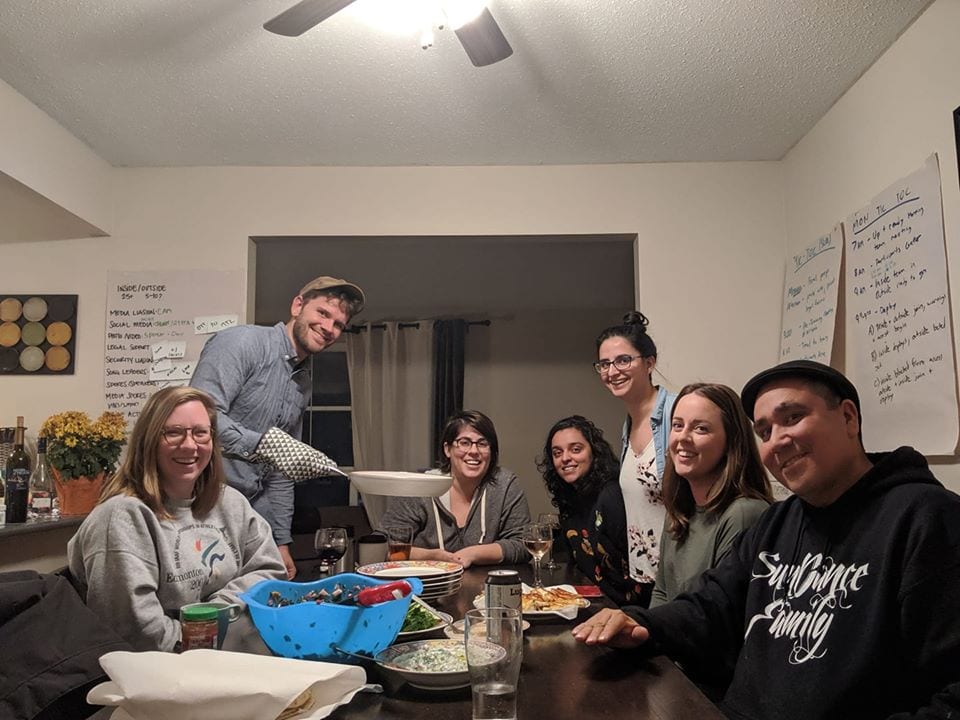350
Ask a Digital Campaigner
We want to help you build power and community during the pandemic
During the COVID-19 pandemic, digital skills are critical to activism and community-building. In the early months of the pandemic, we received questions from people all over the world about digital campaigning to drive social change. It was an honour to support you! This project is now closed but we hope that the resources below will be helpful for you as you explore tactics and strategies in the world of digital campaigning.
If you’re trying to make change or organize your community during COVID-19, you might benefit from bringing your questions to a progressive digital campaigner who can help you develop a strategy, choose your platforms, and get your idea off the ground!
Fill out the form below and we will get back to you with advice and tips! We can help you:
- Use digital tools, like petitions, to demand positive social change from institutional decision-makers
- Select social media platforms to share your story and reach new audiences
- Build an inclusive online community and holding virtual events during a pandemic
- Skill up on basic graphic design, website creation, blog writing, video editing, planning live streams, holding webinars, or podcast production.
We are no longer taking new questions.
We hope that the responses we shared below with people across the world who wrote to us from March – June 2020 will be helpful for you as well.
What’s digital campaigning?
In order to increase their impact and grow their reach, movements for social justice and environmental protection are increasingly deploying digital strategies to build political power, grow movements, and overcome geographic barriers. Digital organizing can include the use of digital tactics to move institutional decision-makers, social media storytelling, people’s journalism, and the creation of online communities. Our fights for justice are as important as ever during the COVID-19 pandemic, but our activism must adapt to the new landscape. That’s why many grassroots groups and non-profits are moving their work online and shifting their organizing to a digital space.
Here are some excellent examples of justice-centered digital campaigns during the COVID-19 crisis:
- Mutual Aid Organizing: Across the country, hundreds of online communities are sprouting up to connect people requesting and offering support.
- The People’s Bail Out: Organizations such as the Leap are filling the gaps in mainstream media reporting through people’s journalism to educate the public about a justice-centered response to the COVID-19 pandemic.
- Income Support for All Migrants: The Migrant Rights Network is using a “flood the phone lines” digital tactic to demand that federal cabinet ministers put in place income supports for all migrants during the pandemic.
- Stop all Construction on Coastal GasLink, Site C and Trans Mountain: Rising Tide North America is using a petition as a digital tactic to call on Trudeau and the Premiers to halt construction on dirty energy projects during the pandemic.
- Cancel Rent: Groups such as Leadnow are engaging in social media storytelling to build the case for a rent and mortgage moratorium to support the hundreds of thousands of people who have lost their jobs during the current economic downturn.
Who are we?
350.org is a campaigning organization that has long invested in digital organizing as an important part of our work to build a global movement for climate justice. We are campaigners on the 350 Canada team, with many years of digital organizing experience, and we want to lend our knowledge to support your organizing during the COVID-19 pandemic.
We’ve set up online communities to build up an unstoppable youth movement in support of a Green New Deal, we use digital tactics to fight climate-wrecking fossil fuel projects, we practice people’s journalism to put a human face to climate impacts, and we use social media storytelling to shine a light on people power. We’ve facilitated many workshops on digital organizing and one of us even teaches a college course on digital campaigning!

Please note this photo was taken prior to the COVID-19 pandemic. We are currently socially distancing in 7 different cities!
Resources
- Campaign Canvas by MobLab
-
- From vision and strategy to storytelling and metrics, the canvas ensures you’ve touched on all the essentials of an effective campaign.
- 350’s guide. to organizing during the Coronavirus Pandemic
- Leading Groups online – an e-book book written specifically for this moment by 350’s Daniel Hunter and Training for Change’s Jeanne Rewa